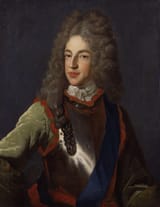Search Results
7/9/2025, 9:14:55 AM
>>509899507
>This was not possible without constitutional change: as a Catholic, James was barred from the throne by the Act of Settlement which restricted Britain’s monarchs to James I’s Protestant heirs alone
>In the early decades of the eighteenth century, Britain was beginning to embrace revolutionary ideas in agriculture, mining, manufacturing and finance, and treading a path towards the foothills of an industrial revolution. With the benefit of relatively peaceful relations with Europe, international trade and economic growth accelerated and over the following half-century London would be cemented in place at the centre of an international trading empire. Protecting prosperity became a central political objective for successive British governments and was linked inextricably to safeguarding constitutional government and the Enlightenment beliefs that sustained it
>Freemasonry was part of this project from the early 1720s. Rather than remain a low-key forum for fraternal sociability, the Grand Lodge of England emerged at the leading edge of eighteenth-century society with Freemasonry a vector for the Enlightenment in several of its different guises
>The Jacobites in France
>The threat posed to Hanoverian Britain by the exiled James Stuart – ‘the king over the water’, ‘the Pretender’ – was considerable. Stuart (pictured), the son of the exiled James II and his second wife, Mary of Modena, was Queen Anne’s closest relative, her half-brother, but as a Catholic he was excluded from the throne by the 1701 Act of Settlement which restricted the succession to the Protestant heirs of James I of England (James VI of Scotland). The coronation of George I, Prince George of Hanover, Anne’s closest Protestant relative and James Stuart’s second cousin, led to riots in England and an uprising in Scotland with Stuart’s supporters seeking to overthrow the new Hanoverian line
>This was not possible without constitutional change: as a Catholic, James was barred from the throne by the Act of Settlement which restricted Britain’s monarchs to James I’s Protestant heirs alone
>In the early decades of the eighteenth century, Britain was beginning to embrace revolutionary ideas in agriculture, mining, manufacturing and finance, and treading a path towards the foothills of an industrial revolution. With the benefit of relatively peaceful relations with Europe, international trade and economic growth accelerated and over the following half-century London would be cemented in place at the centre of an international trading empire. Protecting prosperity became a central political objective for successive British governments and was linked inextricably to safeguarding constitutional government and the Enlightenment beliefs that sustained it
>Freemasonry was part of this project from the early 1720s. Rather than remain a low-key forum for fraternal sociability, the Grand Lodge of England emerged at the leading edge of eighteenth-century society with Freemasonry a vector for the Enlightenment in several of its different guises
>The Jacobites in France
>The threat posed to Hanoverian Britain by the exiled James Stuart – ‘the king over the water’, ‘the Pretender’ – was considerable. Stuart (pictured), the son of the exiled James II and his second wife, Mary of Modena, was Queen Anne’s closest relative, her half-brother, but as a Catholic he was excluded from the throne by the 1701 Act of Settlement which restricted the succession to the Protestant heirs of James I of England (James VI of Scotland). The coronation of George I, Prince George of Hanover, Anne’s closest Protestant relative and James Stuart’s second cousin, led to riots in England and an uprising in Scotland with Stuart’s supporters seeking to overthrow the new Hanoverian line
Page 1
